There are a number of different methods we can use at home to help heal our chakras, including visualizations and meditations, changing old habits, practicing yoga, using crystals and essential oils, and getting the most out of our food. Because different people feel drawn to different healing techniques, a range of methods are covered in this book. If you’re experiencing physical problems, it may help to begin with dietary changes, yoga, massage, acupuncture, and other bodywork first. If your struggles relate to the mind or heart, meditation, crystal work, or essential oils might be a good starting point. In this part, we’ll discuss the most common methods used by practitioners to harness chakra power and how these methods work.


1. Meditation And Visualizations
Meditation is a form of mental exercise that trains the mind to stay focused on a particular object, goal, or sensation, such as your breath.
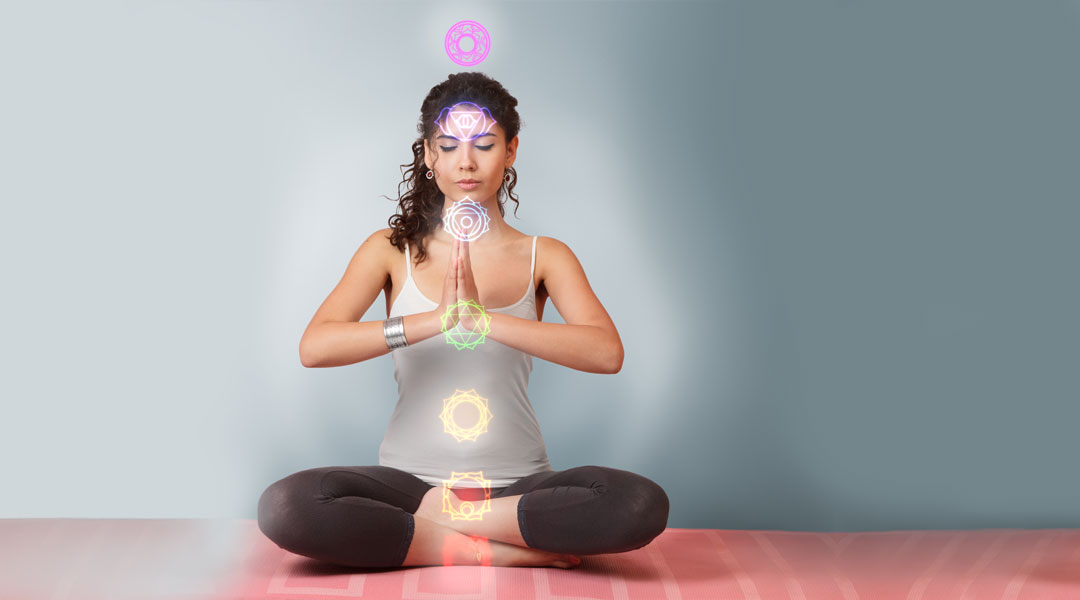

1.1 Purpose
Meditation is a way to calm mental chatter. When practiced regularly, it can help transform consciousness in a way that promotes inner peace, mental clarity, emotional positivity, deep knowing, and concentration, as well as ground us when we feel scattered. By maintaining a specific focus, like the breath, a mantra, or another tool, the mind can stop wandering and getting lost in thoughts, emotions, or other mental distractions. Meditations can also include visualizations, where you create a mental image toward a specific purpose. Envisioning the colors or flow within a chakra can help you connect to them and strengthen them.
Because meditation involves the ability to observe distracting thoughts and emotions without judgment, we learn to control our reactions to stimuli that might otherwise create painful or upsetting reactions. This skill—called mindfulness—can be an incredibly powerful tool for cultivating calm and compassion in your daily life. For the purposes of this book, it can also be a way of connecting with and strengthening, your chakras. You can use meditation to get in touch with what you’re holding in a particular energy center, helping you become more connected with your physical and energy bodies.
1.2 How It’s Implemented
There are many ways to meditate—you can be sitting or lying down, you can be still or meditate while engaging in an activity such as walking, creating art, playing music, or journaling. Some people practice 5 to 10 minutes a day, while others may meditate for longer.
1.3 Why/How It Works
Meditation is a practice that has been time-tested throughout the ages. It has enjoyed a resurgence of interest in the past couple of years, no doubt because many of us want to cultivate a practice to quiet our minds and create peace within our busy lifestyles! But it’s not just a fad. In fact, one 2016 study in Consciousness and Cognition found that just a single session of meditation reduces physiological symptoms of anger—in seasoned and novice meditators alike.
1.4 Pros/Cons of Using This Method
- Pros: On the positive side, meditation can be done anytime, anywhere, within any time frame. It creates a deeper connection with the self and makes it easier for us to shift into higher consciousness. It also helps us access our capacity to self-heal and create mindfulness, which then extends peace into the rest of our lives. Also, because this practice builds upon itself, meditation helps with any self-study practice you may already have.
- Cons: Two words: “monkey mind.” Your mind will want to distract you from your practice, typically by calling up tasks for the day, like what you will be having for dinner, or thoughts you have been avoiding, like worrying about your savings. Even seasoned practitioners of meditation experience monkey mind. Meditation is called a “practice” for a reason: cultivating a sense of deep awareness and inner peace using meditation takes time. It is not an overnight quick fix.
2. Yoga
While there are many forms of yoga, the one most commonly practiced focuses on asana, the series of physical postures and breathing exercises aimed at strengthening us physically, mentally, and spiritually.
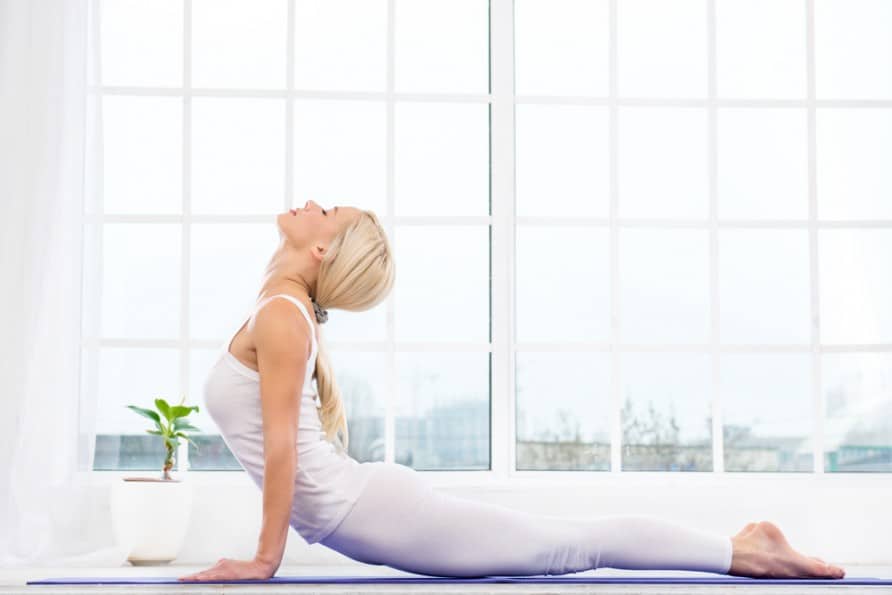

2.1 Purpose
Asana is a program of physical postures that provide physical strength and stamina and are designed to create awareness and connection with the body through movement. Asana yoga is a great tool for self-transformation on various levels—physical, mental, and spiritual.
2.2 How It’s Implemented
Through physical exercises and breath, we connect the mind with the tissues of our body. A variety of yoga postures help open various locations within the body, which brings awareness and balance to the chakras. When practicing yoga asanas, we move the body into different physical postures and then hold those poses for set periods of time. At the same time, we control our breathing in different ways, helping energy circulate throughout the body and cultivating mindfulness. There are different yoga styles, some of which can be particularly useful in balancing the chakras. Kundalini yoga, for example, uses specific physical poses, chanting, breathing techniques, and meditation to try to awaken the Kundalini energy that moves through our chakras.
More advanced yoga postures have a higher risk of injury (headstand and shoulder stand, for example, are not appropriate for beginners or anyone with a neck injury) and should be done with the support and guidance of a trained yoga teacher.
2.3 Why/How It Works
Yoga helps bring vital life force into the chakras, creating awareness and opening the chakras. In general, yoga assists with grounding us in our bodies through a sensory experience. This is especially useful for those of us who tend to spend too much time in our heads, engaged in mental activities, and less time rooted in the Earth’s energy, or fully present in our physical bodies. It also brings attention to how our postures affect how we move through the world.
2.4 Pros/Cons of Using This Method
- Pros: Because yoga requires a lot of physical movement, it can be an excellent form of exercise. Yoga classes tend to be held in quiet studios, so they can be relaxing and great for stress management. Because yoga cultivates awareness of the body, some people find it helps them practice healthier eating habits and other positive lifestyle changes. Also, yoga doesn’t usually require a lot of expensive equipment.
- Cons: Yoga classes can be expensive, and they may not fit into everyone’s schedules. While there are many free yoga videos online, learning yoga as a beginner can be difficult because, without a teacher to guide them, it can be tough to know whether or not one is practicing specific poses properly. Some new practitioners experience pain, especially headaches or muscle soreness, while their body adjusts to the postures, energy shifts, and physical exertion of yoga practice. It also takes time to obtain optimal results from yoga, and yoga must be done in conjunction with self-study and cultivation of stillness to truly support chakra healing.
3. Crystals
Crystals are used to draw out or redirect energy, as well as to develop the strengths associated with a particular stone. They are also used to rebalance and heal.


3.1 Purpose
Working with crystals and stones helps us engage with the natural Earth energy to nourish our strengths and gifts. It also helps us release what no longer serves us, tap into our gifts, restore balance, heal, and elevate consciousness. Crystals can be used in many ways to address various challenges.
3.2 How It’s Implemented
There are many ways to work with crystals. One common way is to keep a small crystal on your person, whether worn as a pendant, earrings, or bracelet or carried in your pocket. Carrying a crystal on your body keeps its energetic frequency resonating with you throughout the day. Another way to work with stones, especially when doing chakra healing, is to lie down in a comfortable spot, place chakra-specific crystals on their particular chakra, and allow yourself to meditate (or simply clear your mind) while the stones amplify what you’re currently working on — whether it be to release something from a certain chakra, cultivate your gifts, break patterns, or work toward another goal. Another great way to use crystals is to hold them in your left (receiving) hand during meditation, so you can receive the beneficial healing vibrations of the crystal.
3.3 Why/How It Works
Recall our earlier discussion of how everything is energy, vibrating at its own particular frequency. Crystals, too, each have their own particular vibration and purpose. By choosing one to help you with a certain goal, or by allowing yourself to be drawn to one, in particular, you align yourself with the vibration of that stone, as it works directly with your energy body (and often benefits the physical body, as well). For instance, rose quartz not only helps the heart chakra but also helps reduce blood pressure. It’s all related.
3.4 Pros/Cons of Using This Method
- Pros: Crystals are aesthetically pleasing to look at, effective, easy to use, and versatile to work with. The effects of crystal healing can also be easily felt; you can literally feel the pulsing in your hand when holding a crystal that is perfect for what you’re working on.
- Cons: It may take some time to become familiar with how to work with crystals. Cost and finding the right crystals may also be challenging—but the Internet makes it easier to find the specific crystals you need at a good value.
4. Essential Oils
Essential oil therapy is an ancient healing practice that involves using natural, often fragrant, compounds that exist in many types of plants for their curative properties.


4.1 Purpose
Since discovering the healing benefits of certain plants, herbs, and flowers, people have found ways to include them in our lives—by adding them to meals, creating medicines with them, topically applying them to affected areas, and distilling their scent essence. While many people already know that essential oils smell fragrant and pleasant, each plant also has its own energetic resonance, allowing each one to treat both the subtle energy body and the physical body. For those of us who think too much, essential oil therapy is great because it bypasses our thought processes and vibrates with us on a primal level. It can help us shift from being in a place where emotions are overwhelming, to a place where we feel more able to take a breath and ease into our next steps. It is also useful in bodywork, helping to release tension in the muscles and treat specific types of pain.
4.2 How It’s Implemented
To help the chakras heal, applying 5 to 6 drops of a particular essential oil to a certain chakra can ground, center, release, or open it. Mix a few drops of your selected essential oil in a carrier oil and apply the chosen oils with a cotton ball, or massage them into the chakra directly. When using essential oils on the body, be sure to dilute them in carrier oils — particularly those that are highly irritating to the skin when used alone. They’re called carrier oils because they actually carry the essential oil for application. A good carrier oil to use is jojoba, which you can find at your local health food store. You can enhance the healing experience by combining a meditative practice right after the application of the essential oils.
4.3 Why/How It Works
Essential oil uses go deeper than simply smelling good. They access our energy body and physical body, often connecting them together in synergy, and creating healing on various levels. They are particularly effective for chakra healing because they bring the energetics of the oil to the chakra, helping us connect with it. And, because the healing happens on a base level, it bypasses the brain, immediately accessing our internal healing.
4.4 Pros/Cons of Using This Method
- Pros: The healing that essential oil therapy brings is quickly accessible. Quality oils are also easy to find, they can travel with you, and there are many ways to work with them (by applying them to the body, diffusing them in your living or workspace, creating blends and elixirs, among others).
- Cons: Because some essential oils may irritate the skin, they are not recommended for topical application on the body without a carrier oil. Also, ingesting oils is not recommended, because they can inflame the digestive tract, and some oils (depending on the manufacturer) are adulterated. In addition, although essential oil therapy is powerful, it should be used in conjunction with other modalities to cultivate inner healing to help you achieve chakra balance.
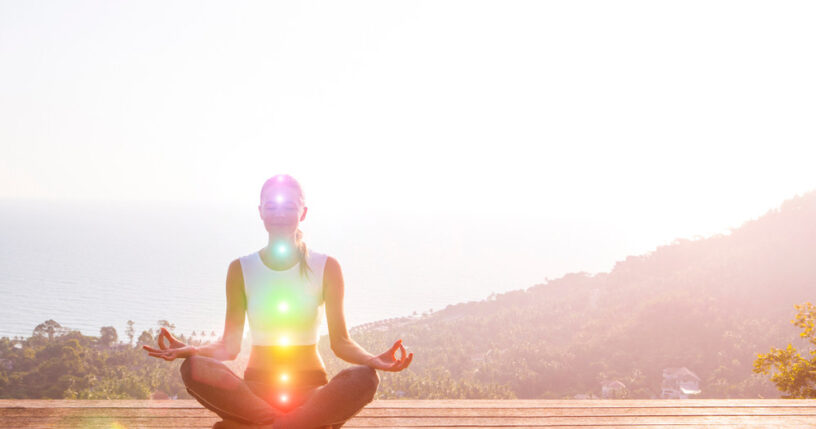
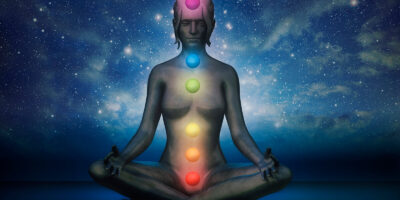

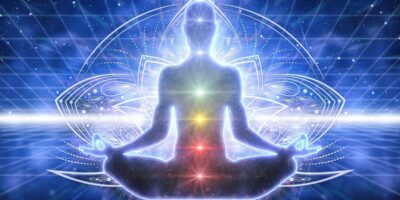


Leave a Reply